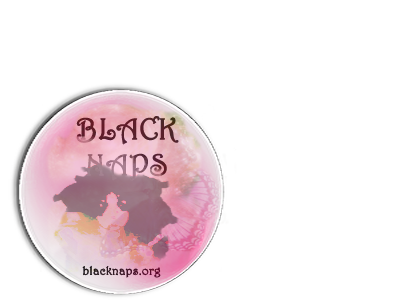1 tbsp Hair Oil ( olive oil, coconut oil, etc)
1/2 tsp pure unrefined Shea Butter
Shower Cap
Towel
You can choose to shampoo and condition your hair before this or you can do this without shampooing first. Apply the shea butter in your hair and scalp. Massage well. Pour the hairoil in a small container and warm it up slightly under warm tap water for a few minutes. Apply the slightly warm oil in your hair. Cover with a shower cap and rap a warm towel around it for 15-30 minutes. Remove and style as usual.
Deep Hair Conditioning: It is important to condition your hair properly. Keep it simple. Do this at least twice a month. You will need:
1 tsp pure unrefined Shea Butter
Your regular conditioner
2 tbsp Hair Oil ( olive oil, coconut oil, etc)
Shower Cap
Towel
Shampoo your hair as usual. Apply your conditioner. Add the Hair Oil. Cover with your shower cap for 15 minutes or more. Rinse out. Towel dry.
For a more intense conditioning - shampoo as usual. Apply your conditioner. Mix the shea butter and Hair Oil together. Massage well. Cover with shower cap for 30 minutes or more. Rinse out. Towel dry
Why are some Shea Butters grainy?
Shea Butter is sometimes grainy for many reasons. But the #1 reason is heat. Shea Butter will melt in the sun, by a heater or any other form of heat. When shea butter is heated at high temperatures, it becomes grainy when it cools. It can still be used. It just feels interestingly grainy.
Do you have to clean Shea Butter?
No! If you purchase shea butter from a good source it should already be clean and you do not need to clean it, drain it, filter it etc etc.. If you have to clean your shea butter before you use then start looking for another source.
Is all Shea Butter yellow?
No! All shea butter is not yellow. Most shea butters are cream colored or beige to medium yellow. Try not not base your knowledge of shea butter by color first. Look at quality and texture.
Why are some shea butters so hard you have to scrap it to use it?
This means that it was heated at a very high temperature, it is not fresh, or it has been mixed with other products. It could also be that the shea butter is several months old. As long as it is not more than 18 months to 24 months old, you are fine. Fresh shea butter is always the best to use. Fresh shea butter is anywhere between 1 month - 3 months old.
Does Shea Butter smell?
No! Shea Butter does not smell. It has a natural smoky nutty scent. If you are familiar with shea butter you will recognize the scent. This scent is natural so it does not linger when applied to skin or hair. The fresher the shea butter, the stronger the natural scent. Some may not be familiar with shea butter and therefore cannot handle the natural scent. Not to worry. Just leave the shea butter uncovered for several days and it will be just fine.
What makes some Shea Butters smell so bad?
This happens for several reasons but the three most common reasons are as follows. 1. The shea butter was extracted using dirty water. 2. The shea butter was not properly stored. 3. The shea butter nuts were fermented before extraction. Some ferment the shea butter nuts before extraction. And this gives the shea butter a very pungent scent.
Why are there so many grades of shea butter?
Because shea butter is used for a variety of things including skin, hair, cosmetics and in food. There are several grades of shea butter depending on what your interests are. Also shea butter is now a cash cow so like any other cash cow there is going to be a lot of buzz about it. Basically unrefined shea butter or raw shea butter is Grade A and say a shea butter lotion is a Grade F. And in between that are a host of other grades and levels. What it simply means is that if you are interested in 100% shea butter then go for unrefined. If you would like a shea butter lotion then it will fall in the lower grade because it has to be mixed with other ingredients to provide the lotion.
Take flour for example. There are a gazillion grades & levels of flour. You may prefer whole wheat flour or bleached flour or bread flour. It is all flour but the end result in your recipe will be different. It is the same with several products on the market. For example Cocoa Butter. Cocoa Butter is used for all kinds of things and there are many grades and levels very similar to Shea Butter. But we all purchase what we prefer. Including the various types of chocolate they are used in. So it all comes down to preference.
So shea butter is just as complex when it comes to grades & levels. You will drive yourself mad trying to figure out every grade and level. Just go with what you prefer & call it a day!
Should Shea Butter be refrigerated? How should it be stored?
No! There is no need to refrigerate shea butter. It will only get hard & cold. You want your shea butter soft enough to apply to your skin. Shea butter should be stored like all other skin & hair products. In a cool dry place away from heat.
Can Shea Butter be heated?
Yes! Shea Butter can be heated. But you should know what you are doing. If you do not know what you are doing then don't. When you purchase shea butter ask your vendor what to do if you are not sure. Do not go by what others around you have said or are doing with their shea butter (unless you trust them & they know what they are doing) If you overheat your shea butter you can still use it but it will not be that beneficial. This is where it gets grainy and very hard.
Can Shea Butter be scented?
Yes! Again you should know what you are doing. Whether you are using essential oils or fragrance oils, be cautious. Use just a few drops at a time. If you do not know what you are doing then don't attempt it.
Can Shea Butter be mixed with other oils?
Yes! But this is also on the level of preference. Shea butter is already naturally oily so additional oils being added should serve a purpose. Don't add oils to your shea butter just because your friend told you to otherwise you will end up with an oily mess.
Can Shea Butter be used by anyone?
Yes! That is the beauty of shea butter. It can be used by anyone in any climate. Remember shea butter originates from Africa. Africa is a multicultural continent. Shea Butter is versatile and you control how much you want to use. Because it is natural, it can be used several times a day. Morning, afternoon or night from hair to toe.
What makes Shea Butter so smooth?
Shea Butter gets it's smoothness from kneading. After the shea butter has been extracted and prepared, it is kneaded to smooth out big lumps and make it even & easier to apply.
What is the difference between West African Shea Butter & East African Shea Butter?
Lately there has been a lot of buzz about East and West African Shea Butter. It is rather unfortunate that this is going on. First of all there are several countries involved when one mentions East & West Africa. It is like saying the East Coast and the West Coast. Now we all know that there are several states in the East Coast and several states in the West Coast. New York is not the only state in the East Coast and California is not the only state in the West Coast. Now transfer that to East Africa & West Africa. Hello!
So when these people are talking about West & East Shea Butter, what country are they referring to? Sooner or later, they will start saying Central African Shea Butter is better. Oh don't forget Southern Africa and South Western Africa. This could go on for days. And if you have noticed, the East African Shea Butter is triple the price of West African Shea Butter. Hummm!
Basically all the noise about East African Shea Butter is centered on Shea Butter from Uganda. What they do not tell people is that Ugandan shea butter is mostly prepared for cooking & less for skin care & hair care. So the Shea Butter is much oilier, has a different consistency. Shea butter from West Africa is mostly used for skin & hair care and less for cooking. So Shea Butter from West Africa is thicker & lasts longer. So once again it comes down to preference. So go with what you prefer but don't fall for the hype in prices.
How to use & store Shea Butter. What is the shelf life of Shea Butter?
To use shea butter, take the desired amount, rub into the palm of your hands until melted and apply to your skin or hair.
To store shea butter, wrap with saran wrap or place in a zip lock bag or in a container & place in a cool dry place. Shea Butter has a shelf life of 18 months to 24 months. It can still be used after that time but it will not be as effective.
ADDITIVES OR FILLERS
Additives - e.g essential oils or natural oils are sometimes added to shea butter to provide a variety of scents. Most vendors will state that their shea butter is scented.
Fillers - e.g beeswax, petroleum jelly, vegetable oils etc. are sometimes added to shea butter to stretch the shea butter. Vendors who practice this will usually not state so.
Depending on your preference, you will be fine with your shea butter. But if you are seeking pure unrefined shea butter, make it a point to purchase samples, try it out and decide from there. Fillers will definitely change the texture, scent & color of shea butter. In cases where the shea butter is heated at high temperatures in order to include fillers, the healing properties of the shea butter is diminished.
What Happens to Shea Butter after it has been extracted. Four main things happen to shea butter after it has been extracted. Refining, Bleaching, Deodorization & Degumming.
Refining: Sodium Hydroxide is mixed with the shea butter. Sometimes Sodium Hydroxide and Sodium Carbonate are mixed and added to the shea butter. This removes the free fatty acids from the shea butter. The phospholipids, proteins and minerals are removed by this process. Refining temperature is about 74 degrees.
Bleaching: In this process, important minerals are removed. The shea butter goes through an acid treated filter. Natural components and natural smells are removed. Bleaching temperature is about 110 degrees.
Deodorization: The natural smell and the natural minerals and vitamins of the shea butter are removed using steam and the exclusion of air during this process. Deodorization is at temperatures of 240-270 degrees. The shea butter which is now vitamin and mineral deficient as a result of this process is sometimes passed off as unrefined. Some justify this by saying that no external heat was applied to the shea butter.
Degumming: This removes protein compounds, complex carbohydrates if any, and the natural gums of the shea butter. Degumming also removes calcium, magnesium, iron and copper from the shea butter. This process is done at 60 degrees.
So understanding the difference between Unrefined Shea Butter and processed shea butter is very important for individuals interested in natural shea butter. Ask for samples especially if you are new to shea butter. As time goes on you will understand shea butter and will be able to tell the differences.
Shea Butter Today
Shea Nuts after shelling
Today, shea butter is acknowledged all over the world for its nourishing, enriching and toning properties for skin & hair. Like every good product, traditional African shea butter has been dissected into refined, processed, industrialized, extra refined, ultra refined and a muddle of other names.
The commercial method of extracting shea butter has also added to the perplexity of shea butter. In most circles, shea butter is used as an ingredient in soaps, shampoos, conditioners, hair relaxers, lotions, hand & body creams etc. There is nothing wrong with using shea butter as an ingredient. As long as it is unrefined shea butter and the portions in the product is generous. It is important to preserve the ancient methods of shea butter. Shea Butter is nature's wonder.
The Shea TreeLiving up to two centuries, the Shea Tree bears fruit after 20 years and produces a full crop after 45 years. It grows mainly in West Africa, and can reach a maximum height of 15 to 20 meters.
The Shea Tree cannot be cultivated. It blooms from June to July and bears dark green fruits which fall to the ground when ripe. Each fruit contains a nut with a hard white kernel which is the source of the Shea Butter. Before the Shea Nuts are collected to prepare shea butter, a prayer is said. This has been the practice for centuries in Ghana. The prayer is simply to thank mother nature for providing the shea tree. And also to show respect for collecting the shea tree's fruit.
Ways of Extracting Shea Butter
Shea Nuts before shelling
Extracting Shea Butter Traditionally Depending on methods passed down from generations, various families in West Africa have their own traditional methods of extracting shea butter. The basic process is the same in most families. Shea Nuts, the fruit of the Shea Tree is picked, cracked, grilled and pounded to extract the butter. It is then boiled in water for a number of hours until the fresh shea butter rises to the surface. It is then scooped into gourds and left to cool and set. This is all done by hand. This process has been done for centuries. Although this process does not produce mass shea butter, it is still the best way to extract because there is no need for chemicals or synthetic agents to be added to extract the butter. This is called Unrefined Shea Butter or Raw Shea Butter.
Extracting Shea Butter by PressingAn expeller type press is used to crush the nuts of the shea butter. The shea nuts are pushed against the metal press. The movement is similar to a meat grinder. Then the shea butter is squeezed out of the nut by pressure. The end result is Unrefined Shea Butter or Raw Shea Butter.
This method is used by many African women these days because it helps them organize and produce more shea butter in less time. It does not involve any chemicals. It is simply a faster way of extracting without compromising the pure unrefined shea butter. This process cuts at least 3-5 hours off the traditional extraction time.
Extracting Shea Butter using SolventThe Shea Butter is removed from the Shea Nuts by dissolving the shea nut with a chemical called Hexane at temperatures of about 56-65 degrees. Traces of the solvent remains in the shea butter. Sometimes left over shea butter from the Pressing method are mixed with the left over from the Solvent method and sold as "Unrefined Shea Butter" So ask questions if you do not trust your shea butter source.
I found this bit of information to be quite beneficial. I hope you ladies have as well. Enjoy!!!!






















0 comments:
Post a Comment